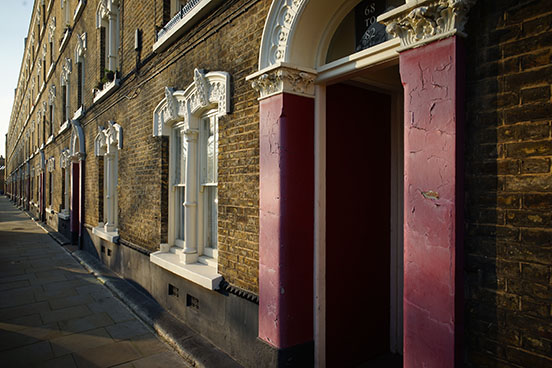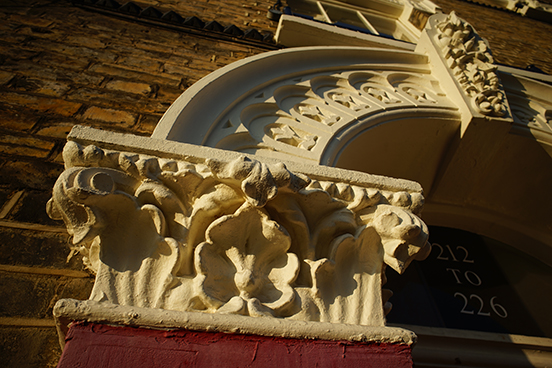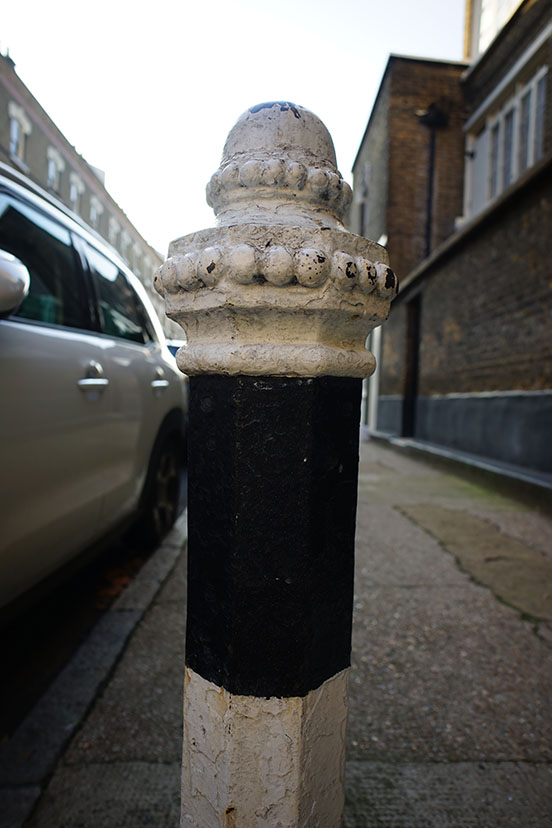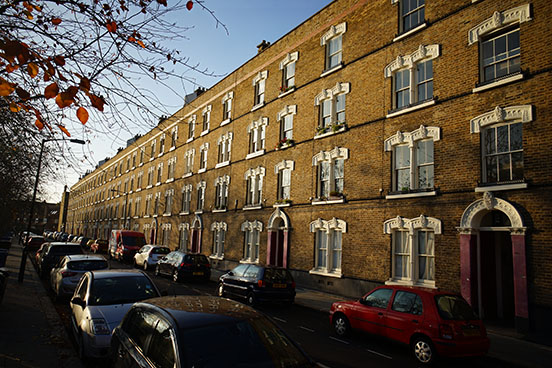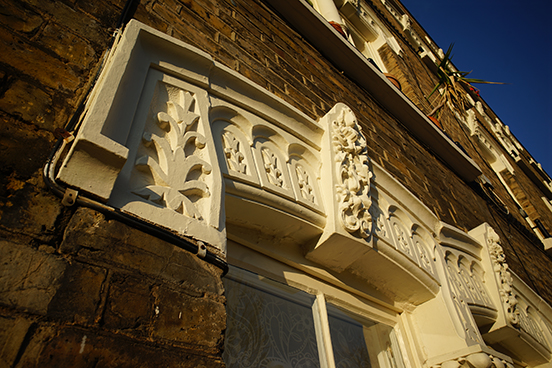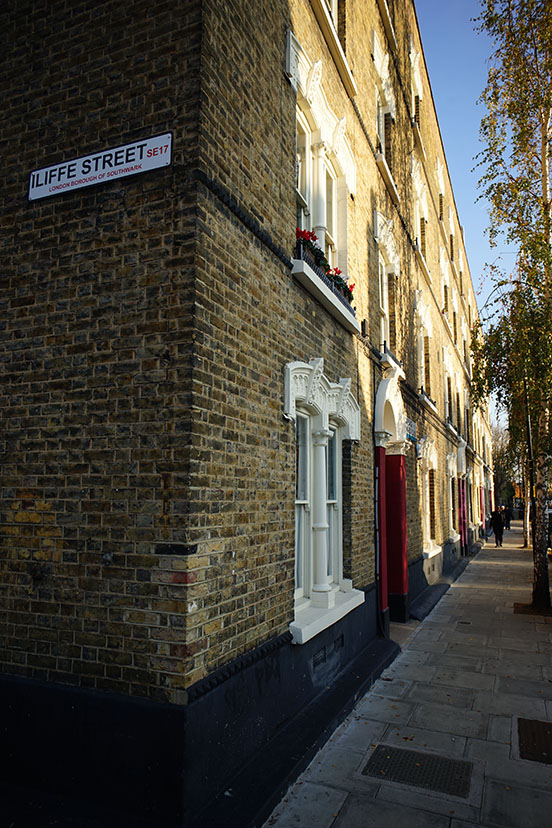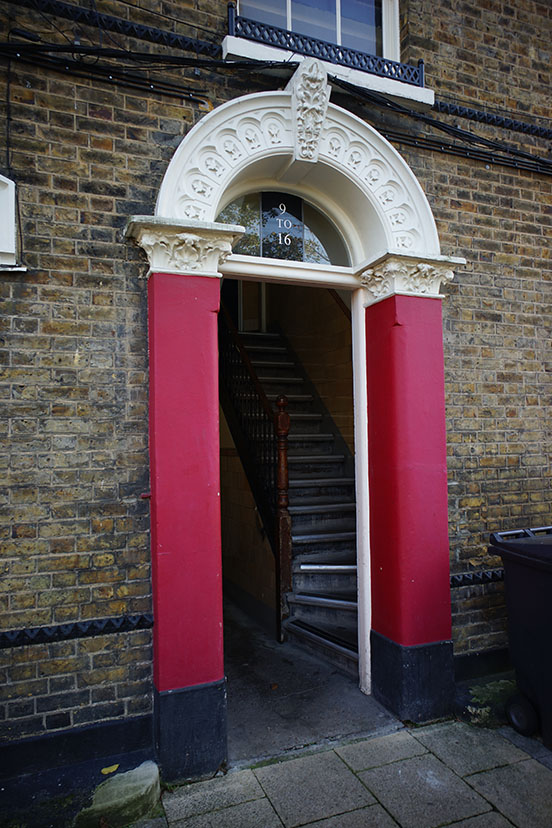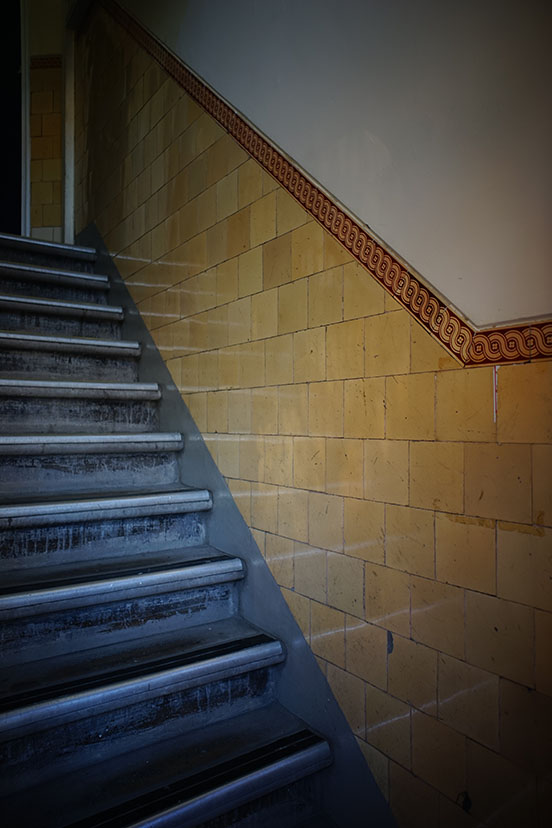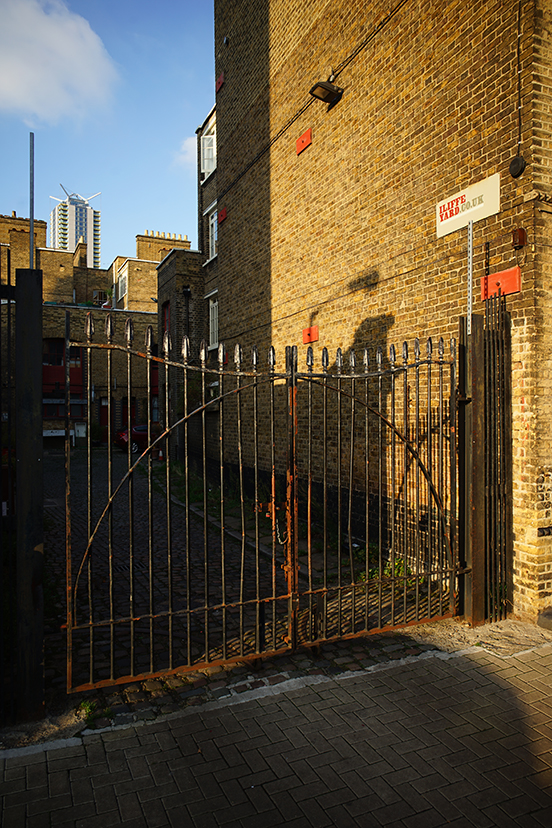30.11.2018
WALWORTH GOLD
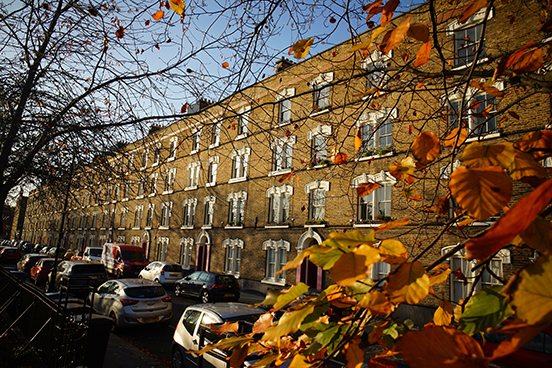
The Pullen's Estate was built by James Pullen & Son from 1884 to 1901. James Pullen seems to have made his money in Australia. He was one of the great army of adventurers drawn to the discovery of gold in Victoria in the 1850s. Water was transported by cart to dry areas to enable panning gold from the dirt. James Pullen, whose profession up to this time was as a plumber, knew how to build sluices to channel flowing water. As the goldfields of Ovens, Wood End and Pleasant Creek developed, he went on to build fences, roads, bridges and buildings. He returned to London, seemingly with ample money and building expertise, in the 1860s.
From the minutes of Vestry of the Parish of St. Mary Newington: "In November 1884 a Mr J Pullen applied to lay drains in Amelia Street and Worcester Road (now called Iliffe Street) ... to serve a new development extending over the entire block of land between these streets ... the group [of buildings] is remarkable in combining flatted dwellings with continuous workshops in the mews behind. This combination of workers' housing and industrial units contrasts with the better known schemes by local authorities, Peabody Trust and Improved Industrial Dwellings Company, which concentrate almost exclusively on providing housing alone."
When built the estate consisted of 684 dwellings in 12 tenement blocks, and 106 workshops arranged around four yards attached to the rear of the dwellings, over an area of seven and a half acres. Each block was four stories, punctuated with a set of ornate entrances to common stairwells, giving access to two flats per storey. The blocks are faced in yellow London brick, and enriched with plaster arches over windows and doors.
In 1899 the flats consisted of three main rooms; a living room, a bedroom, a parlour, with a WC, a kitchen and a scullery. A parlour, from the French "parler" to speak, was the room you would receive guests in, with your best furniture, the living room would be for family only. Few houses today have a scullery, perhaps better known by the modern name of utility room, a small room devoted to washing dishes, laundering clothes and "other dirty household work". To modernise the flats, today the scullerys have been converted into bathrooms.
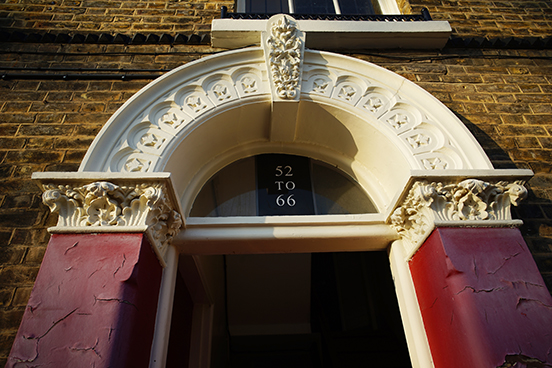
The rent in 1899 was eight shillings a week. A further sixpence per week was charged for cleaning the stairs and gardens. Eight shillings back then, according to the National Archives, was a day's wages for a skilled tradesman.
When I lived on Pullen's Estate in the 1950s and 60s, it was known for being well maintained and I can remember my mother cleaning our part of the stairwell in our block each week. The estate was known in Walworth as "where the posh people live". We had no bathrooms, so we had to "wash down" in the scullery. We went to Manor Place Baths for our weekly bath.
According to my mother, every Monday morning a chauffeur-driven car used to drive up to the estate's rent office in Amelia Street with two ladies sitting in the back. The previous week's rent (less a sum that was held back for maintenance) was handed over and the car was driven off. One of these ladies was probably Ellen Rosina Pullen, granddaughter of James Pullen. She died in 1957, thereafter the estate was run by directors of the Pullen's Estate Company.
The subsequent period is not a heartening story, the estate became very run down, the lack of bathrooms were an anomaly in the modern era. Apparently the directors did plan upgrades to the flats, but they were blocked by the Council which had plans to demolish the entire estate, as had been the vogue in the 1950s and 1960s. Southwark Council pressed ahead with a compulsory purchase order, and in 1977 took possession of the estate. They paid £1,125,000 for all the buildings - about £8,500,000 today, the price of a single large London house.
Extracted from The Pullen's Story 1879 to the Present Day, © Roger Batchelor. Available from canofworms.net
